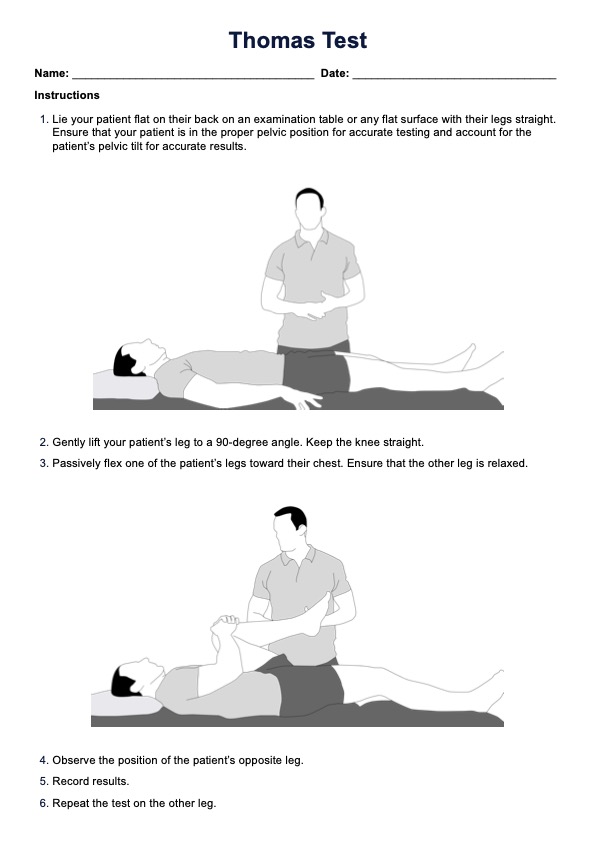The results of the Thomas Test provide healthcare providers with an assessment of the patient's hip flexibility and range of motion. A positive impact, indicating a limited range of motion or difficulty maintaining the test position, can demonstrate hip flexor tightness or contractures. However, a negative result does not necessarily rule out hip problems, as other factors, such as a joint capsule or labral tears, can also affect hip function.

Thomas Test
Assess hip extensibility and diagnose hip flexor contractures with our Thomas Test template.
Thomas Test Template
Commonly asked questions
The Thomas Test is a low-risk physical examination and generally poses no significant risks to patients. However, patients with pre-existing hip or lower back conditions may experience discomfort or pain during the test. Sometimes, the test may exacerbate these conditions, but healthcare providers can modify the test or recommend alternative assessments if necessary.
The frequency of Thomas Test assessments depends on the patient's needs and medical history. Patients with known hip or lower back conditions may require more frequent assessments, while others may only require periodic evaluations as part of routine physical exams. Healthcare providers can determine the appropriate frequency of Thomas Test assessments based on the patient's needs.
EHR and practice management software
Get started for free
*No credit card required
Free
$0/usd
Unlimited clients
Telehealth
1GB of storage
Client portal text
Automated billing and online payments











